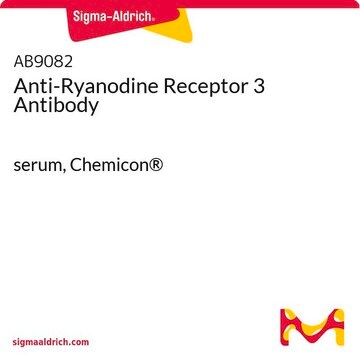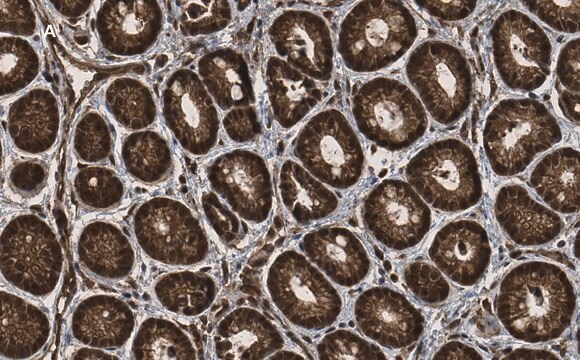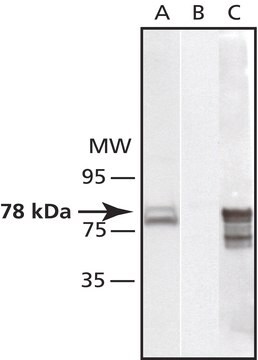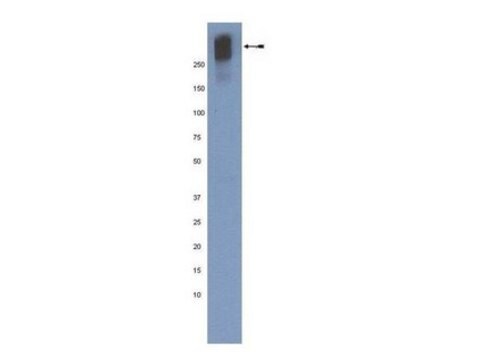AB3000
Anti-IP3 Receptor Type II Antibody
Chemicon®, from rabbit
Synonyme(s) :
Inositol 1,4,5-Trisphosphate Receptor
About This Item
Produits recommandés
Source biologique
rabbit
Niveau de qualité
Forme d'anticorps
affinity isolated antibody
Type de produit anticorps
primary antibodies
Clone
polyclonal
Produit purifié par
affinity chromatography
Espèces réactives
mouse, hamster, human, monkey, rat
Fabricant/nom de marque
Chemicon®
Technique(s)
immunocytochemistry: suitable
immunofluorescence: suitable
immunohistochemistry: suitable
immunoprecipitation (IP): suitable
western blot: suitable
Numéro d'accès NCBI
Numéro d'accès UniProt
Conditions d'expédition
wet ice
Modification post-traductionnelle de la cible
unmodified
Informations sur le gène
human ... ITPR2(3709)
Spécificité
Immunogène
Application
Signaling
GPCR, cAMP/cGMP & Calcium Signaling
Immunofluorescence: 1:10 - 1:20
Immunoprecipitation
Immunocytochemistry: Known to give positive reactivity on AR4-2J, HL-60, COS-I, HEK-293, and RBL-2H3 cell lines.
Immunohistochemistry: Paraformaldehyde or methanol fixes are effective.
Optimal working dilutions must be determined by end user.
Forme physique
Stockage et stabilité
Informations légales
Clause de non-responsabilité
Vous ne trouvez pas le bon produit ?
Essayez notre Outil de sélection de produits.
Code de la classe de stockage
10 - Combustible liquids
Classe de danger pour l'eau (WGK)
WGK 2
Certificats d'analyse (COA)
Recherchez un Certificats d'analyse (COA) en saisissant le numéro de lot du produit. Les numéros de lot figurent sur l'étiquette du produit après les mots "Lot" ou "Batch".
Déjà en possession de ce produit ?
Retrouvez la documentation relative aux produits que vous avez récemment achetés dans la Bibliothèque de documents.
Notre équipe de scientifiques dispose d'une expérience dans tous les secteurs de la recherche, notamment en sciences de la vie, science des matériaux, synthèse chimique, chromatographie, analyse et dans de nombreux autres domaines..
Contacter notre Service technique








